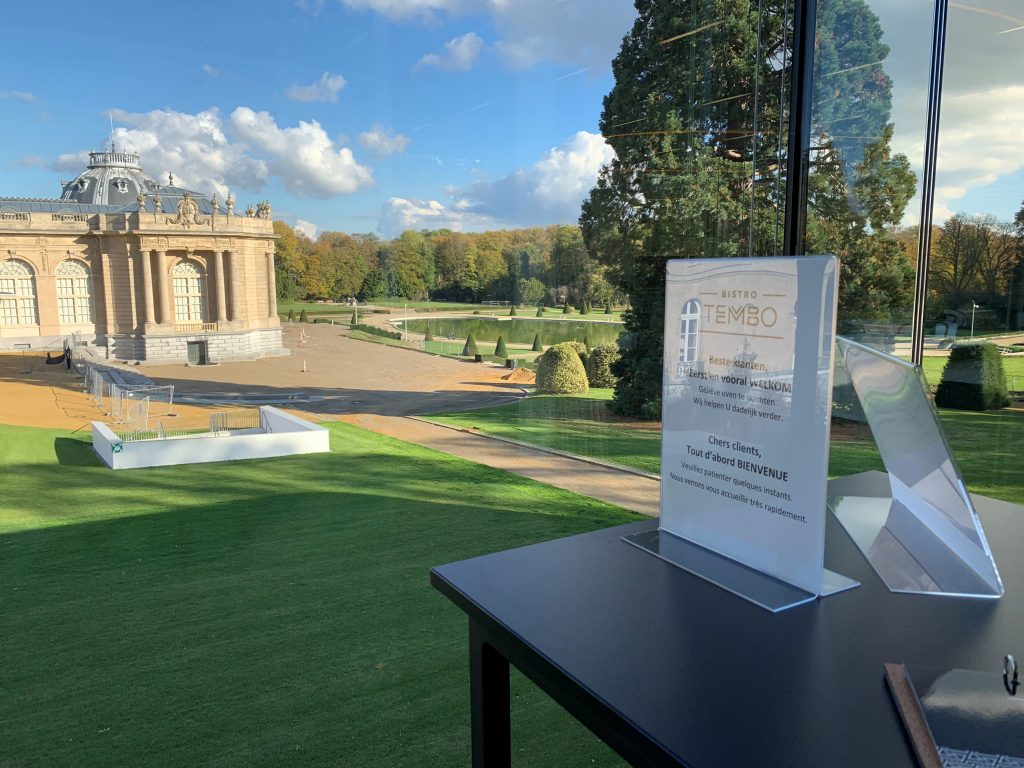A new Tembo for an old museum
As Belgium's revamped Africa museum prepares to re-open its doors, Christian Nielsen checks out its glistening new restaurant.

Friday 16 November 2018
There are signs that Belgium's infamous Africa Museum is about to come out of its chrysalis. The spacey glass atrium that popped up beside the original exhibition halls houses the brand new Tembo Bistro on the first floor. We gave it a shot for Sunday lunch.
The museum itself is scheduled to reopen, after five years of renovations, in early December. But the restaurant is already partially open for business (lunches only). It has an almost spooky presence about it, nestled behind a solid sequoia in a nook of Tervuren Park – the centrepiece of a Flemish town a short tram ride from Brussels. The view from the dining room is unbeatable; be sure to get a table by the all-glass walls facing the original museum halls.
As regulars to Belgian brasseries and bistros, we have come to expect a bog standard offering of staples like stoemp saucisse (bangers and mash), moules frites (mussels and chips), and carbonnade (stew). But, thankfully, Tembo is a little more adventurous than that, tapping into the ethnic roots of the museum. I went for the moambe and rice, which is a popular spicy stew in many parts of Africa, and my dining partner took a goat's cheese salad; both squarely aimed at soaking up the hangovers we both sported. Shameful at our age, but when the kids are away… These were washed down with a passable Chenin blanc as a house white.
An open buffet-style brunch was also on offer at the time of our visit. The menu may well change once the bistro is in full swing, including an evening service, so there's probably no point going into the details yet. It's a good excuse to go back.
Frozen in time?
The tram line out to Tervuren was built by King Leopold II for the 1897 Universal Exhibition, which was also the origins of the Africa Museum. The story goes that Leopold imported scores of natives from his privately held African domain, the Congo Free State, as some kind of living, human zoo. Seven of these Congolese died during their stay. A plaque beside the church in Tervuren town centre memorialises them. According to the Africa Museum website, Leopold II saw the facility as a propaganda tool for his colonial project, “aimed at attracting investors and winning over the Belgian population”.
Before closing in 2013, the museum's vast halls were a taxidermists' heaven with row-after-row of stuffed African animals in ‘natural' poses, as well as caverns of geographic samples and Congolese ethnographic and artistic objects. The old museum was often criticised for its clumsy telling of Leopold's colonial history, which is widely known to be marked by avarice and exceptional cruelty.
One quirky story along one of the museum's corridors recounted the King's fascination with the Welsh journalist and explorer Henry Morton Stanley who famously said ‘Dr Livingston, I presume' upon finding the missionary in the depths of Central Africa. The King commissioned Stanley to explore new territories which, it transpired, he intended to annex as his own personal territory.
Leopold's nearly two decades of recorded abuses in the Congo caused a major international scandal, forcing the Belgian government to demand he relinquish control of the colony to civil administration in 1908.
An exhibit hosted by the museum in 2005, called ‘The memory of Congo', tried to present a “less one-sided” view of the Belgian colonial era. Many expect the newly revamped museum, which had previously been described as “frozen in time”, to go even further in telling that story.
After many a trip taking two small boys to see the (live) tarantulas and eerily life-like crocodiles at the old museum, it will be a fascinating trip down memory lane once it reopens. We'll keep you posted.


